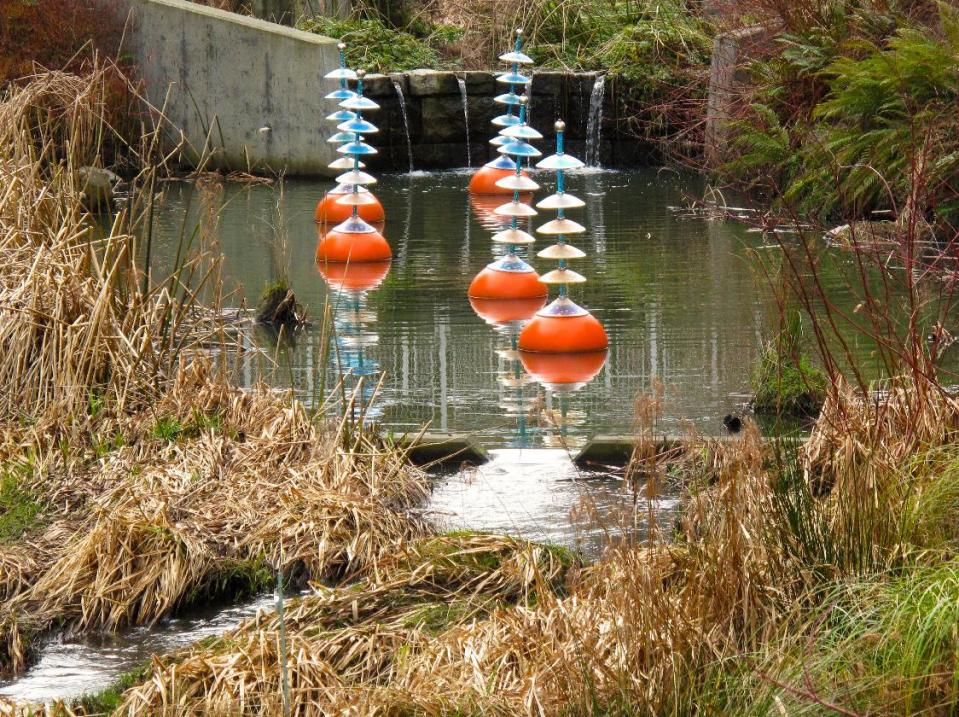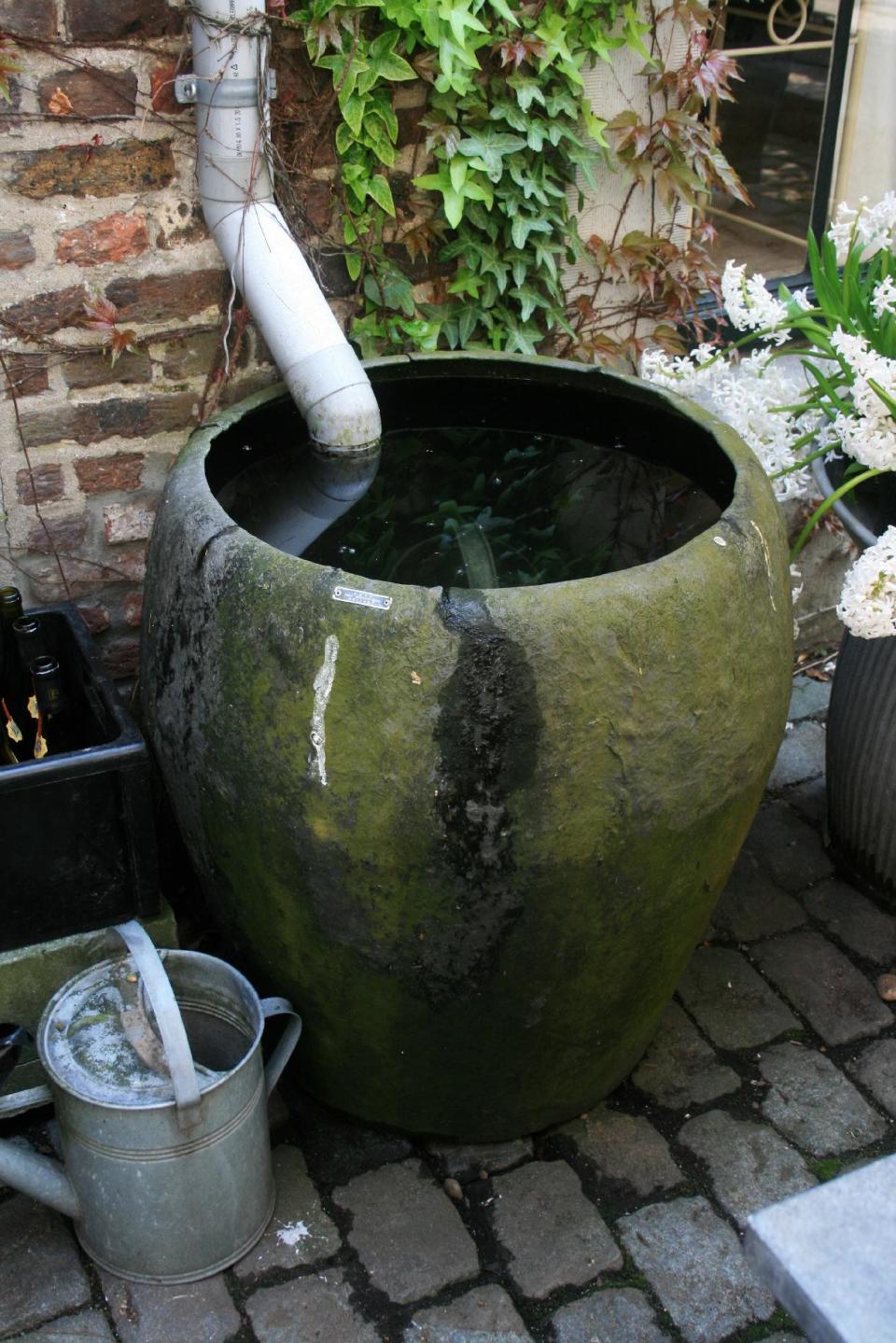Rainscaping: an answer to storm runoff problems
Stormwater runoff can quickly drain a homeowner's wallet. The flooding erodes yards, soaks basements, pollutes streams and wastes a precious resource.
But rainscaping — an integrated system of directed water flow and settling basins — can convert those losses into gains by providing new wildlife habitat, beautifying properties and in some cases providing food for the dinner table.
"It's becoming a pattern of capture and reuse rather than simply moving the water off," said Pat Sauer, Rainscaping Iowa Program administrator. "There are more options out there than just rain gardens. We're looking more comprehensively at what can be done on the landscape."
Numerous state and local groups are holding workshops and providing rebates for residents who add such refinements to their properties as rain barrels, cisterns, permeable paving, settling ponds, green roofs and berms.
"Iowa is providing training for professionals — certified rainscapers — who are designing some of those programs," Sauer said.
"Many of these agencies also build large-scale infiltration systems projects on public lands," said Cleo Woelfle-Erskine, who along with Apryl Uncapher wrote "Creating Rain Gardens." (Timber Press, 2012).
Landscapers often merge art with science. "In Portland, Ore., many parking lots and curb strips sport swales (depressions) and retention basins, often decorated with sculptures of leaping fish," Woelfle-Erskine said.
Rainscaping, though, can be expensive and complicated. So why bother?
"A rain garden is not only a beautiful, low-maintenance, water-saving garden, but can additionally provide habitat and forage for local fauna, sustain select edibles for harvest, reduce pollution, flooding and erosion to nearby rivers and become a daily reminder of the importance of water conservation," Uncapher said.
Yards vary, and rainscaping designs must be site specific. Some suggestions:
— Perk. Conduct a soil test to see if your yard will percolate (drain) rainwater, Sauer said. "If it doesn't perk, then all you'll be left with is standing water. If your yard is hard, like concrete, you'll have to improve the soil."
— Plant native. Prairie plants and woodland seedlings with deep roots help soak up stormwater, filter pollutants and recharge groundwater levels, Sauer said. "Using native plants also helps ensure they'll survive their new setting."
— Installing a residential rain garden, which is a saucer-like depression in the ground that captures rain from a downspout, driveway or patio, is the simplest and least expensive way to retain stormwater, Woelfle-Erskine said. But here's his kicker: "They won't work if your yard is uphill from your house."
— Use permeable materials like bricks, paving blocks or gravel on driveways and walkways, with spacing that allows water to seep into the soil.
— Edibles. Berries, asparagus, fiddlehead ferns, fruit trees, winter squash, Brussels sprouts, and culinary and tea herbs can be creative additions in the right rain garden sites, but use them with care. "Be aware of where the water is flowing into your rain garden from," Uncapher said. "Rain gardens serving to intersect runoff from potentially polluted surfaces are not ideal for edibles unless soil and water nutrients are tested and monitored."
Rain gardens and related rainscaping features give homeowners a chance to be part of the stormwater and pollution solution, while serving aesthetic and functional purposes, said Bob Spencer, RainWise program manager for the City of Seattle.
"Not only are the gardens attractive landscaping, they are protecting our water bodies and the creatures that live there," he said.
___
Online:
For more about rainscaping, see this Missouri Botanical Garden guide:
http://www.missouribotanicalgarden.org/sustainability-conservation/sustainable-living/at-home/rainscaping-guide.aspx
You can contact Dean Fosdick at deanfosdick(at)netscape.net


